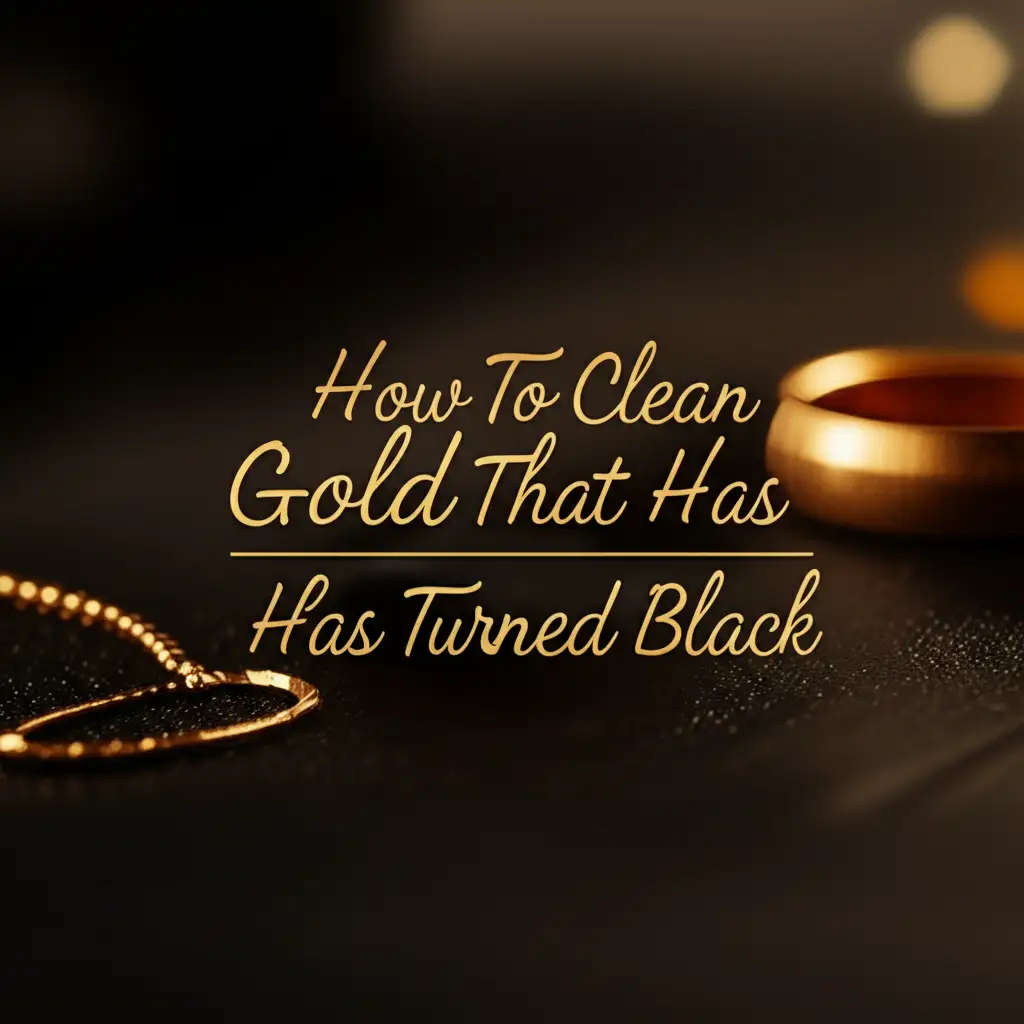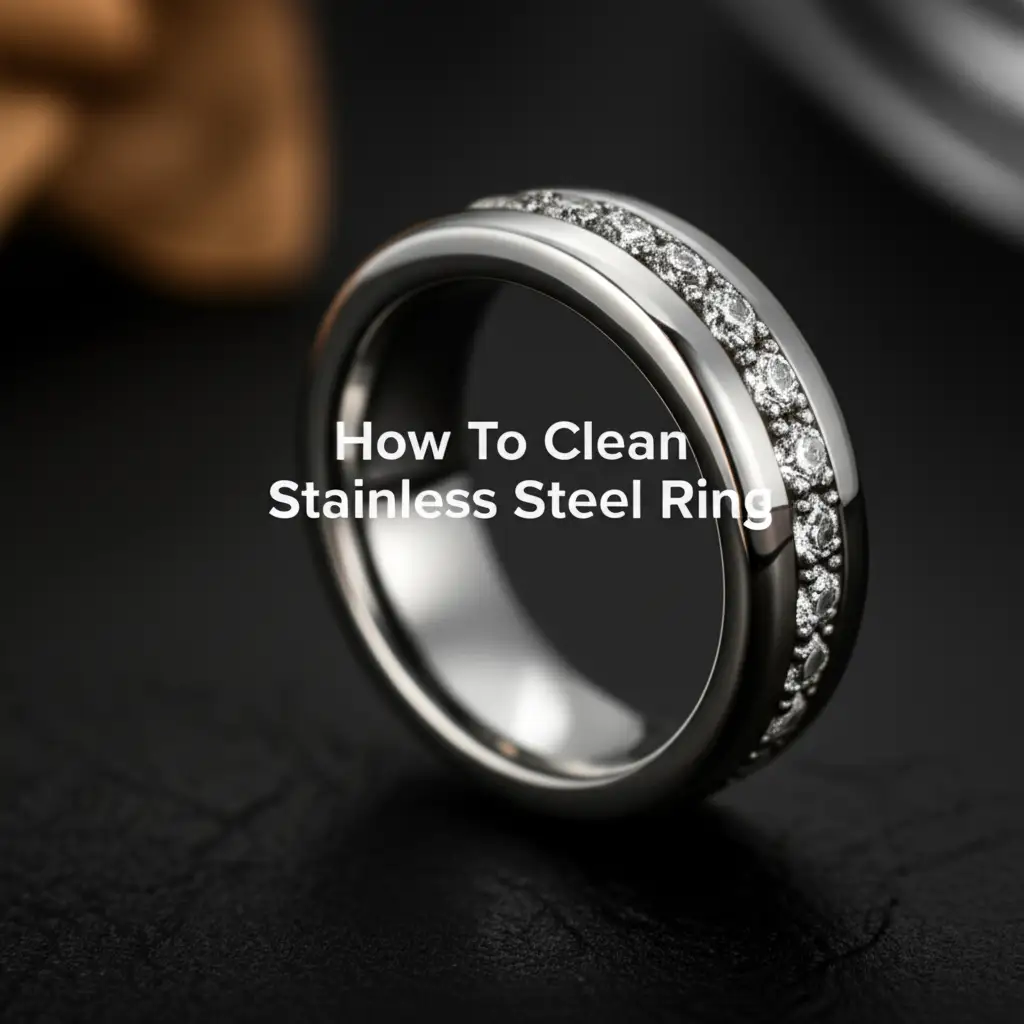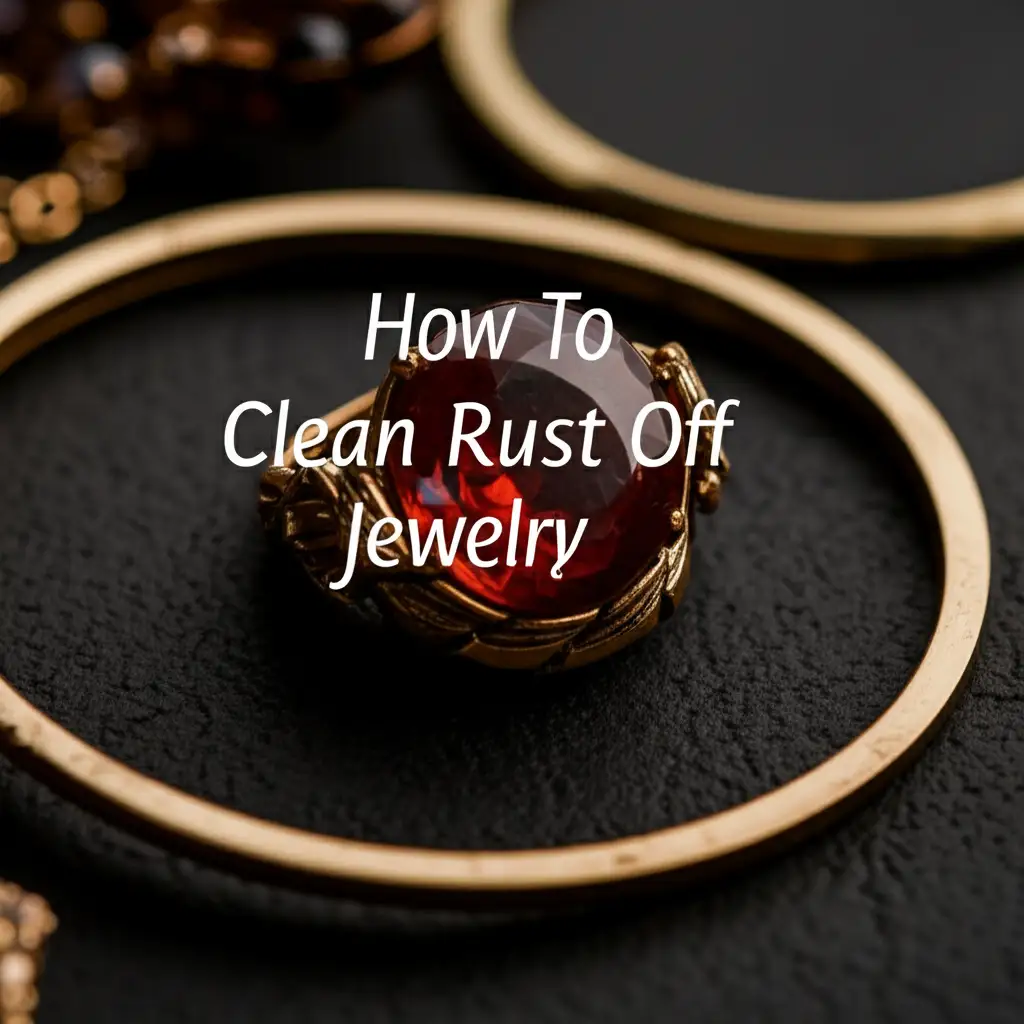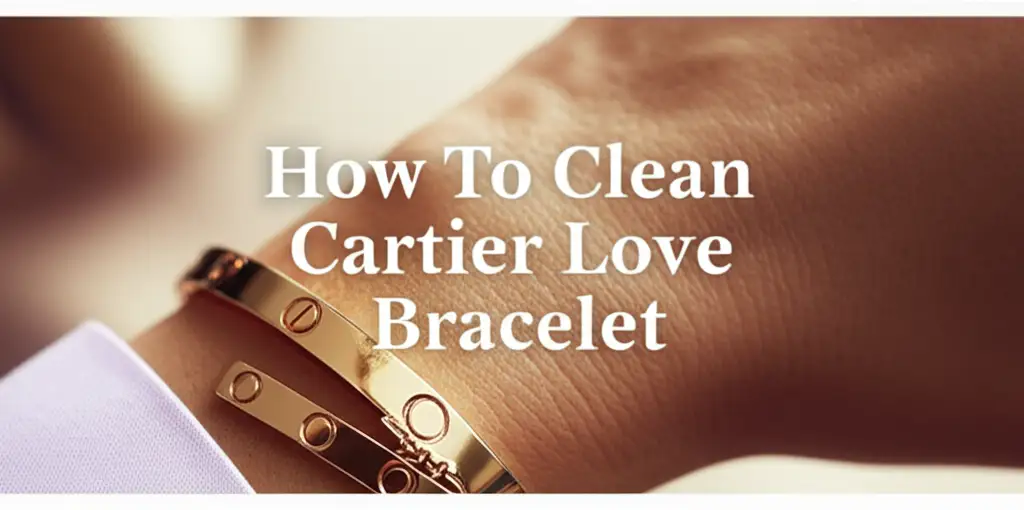· Jewelry Care · 16 min read
How To Clean Gold That Has Turned Black

Restore Your Shine: How To Clean Gold That Has Turned Black
Seeing your favorite gold jewelry lose its luster can be disappointing. Gold, despite its reputation for enduring beauty, can sometimes turn dark or black over time. This common problem occurs because of various factors, affecting both sentimental pieces and valuable investments. You do not need to worry. Learning how to clean gold that has turned black is a straightforward process.
This guide will explain why gold changes color. We will cover the tools you need for cleaning. I will show you step-by-step methods to restore your gold’s natural brilliance. We will also look at how to care for different types of gold. Finally, you will learn simple ways to prevent future discoloration. Your gold pieces can look new again with proper care.
Takeaway
- Identify the cause of gold discoloration before cleaning.
- Use gentle methods first, like mild soap and warm water.
- Baking soda and aluminum foil can tackle deeper tarnish.
- Store gold correctly to prevent future blackening.
- Consider professional cleaning for stubborn issues or valuable pieces.
How do you clean gold that has turned black?
You can clean gold that has turned black by gently washing it with mild dish soap and warm water. For stubborn tarnish, use a mixture of baking soda and aluminum foil, or a soft paste of baking soda and vinegar. Always rinse thoroughly and dry with a soft cloth to restore its shine.
Why Does Gold Turn Black? Understanding the Tarnish
Gold is a precious metal, known for its resistance to tarnish. However, pure gold is too soft for everyday use in jewelry. Jewelers mix it with other metals to make it stronger. These mixed metals are called alloys. Common alloys include copper, silver, and nickel. These alloy metals are the reason your gold jewelry might turn black.
These base metals react to common substances. Sulfur compounds in the air are a major culprit. These compounds are present in everyday environments. They cause a chemical reaction on the surface of the alloy. This reaction creates a dark layer called tarnish. It makes your gold appear black or dull.
Skin oils and body sweat also contribute to this process. The natural oils from your skin can react with the alloy metals. This creates a film on the gold surface. Cosmetics, lotions, and perfumes also play a role. These products contain chemicals that can accelerate tarnishing. Even household cleaning products can cause discoloration. Chlorine in swimming pools is particularly damaging.
Environmental factors matter, too. High humidity can speed up the tarnishing process. Air pollution, especially in urban areas, contains many reactive chemicals. Storing your jewelry in humid or unventilated spaces can make it blacken faster. Understanding these causes helps you clean your gold effectively. It also guides you in protecting it from future discoloration.
Essential Supplies for Cleaning Blackened Gold Safely
Cleaning gold that has turned black requires the right tools. You want to remove the tarnish without damaging the gold. Most cleaning supplies are simple household items. They are safe and effective for many types of gold. I always recommend gathering everything before you start. This makes the cleaning process smooth and easy.
First, you need a mild dish soap. Look for one that is gentle and free of harsh chemicals. Avoid antibacterial soaps or those with moisturizers. These can leave a residue on your gold. Warm water is also essential. Do not use hot water, especially if your jewelry has gemstones. Hot water can damage certain stones or loosen settings.
Next, you will need a soft brush. An old, soft-bristled toothbrush works perfectly. Make sure it is clean and has no residue from toothpaste or other products. A microfiber cloth is ideal for drying and polishing. It is soft and will not scratch the gold. Paper towels can be too abrasive. They might leave tiny scratches on the surface.
For deeper tarnish, baking soda is a powerful natural cleaner. It is mildly abrasive and helps lift away discoloration. Aluminum foil is also useful for certain methods. It creates a chemical reaction that helps remove stubborn black spots. White vinegar is another common household item. It can be combined with baking soda for an effective cleaning paste. For a deeper understanding of combining these two powerful cleaners, explore how to clean with vinegar and baking soda. This resource offers valuable insights into their cleaning properties.
Finally, a dedicated jewelry polishing cloth can restore an extra shine. These cloths are often treated with a polishing compound. They bring out the natural luster of your gold. Avoid using abrasive sponges or harsh chemicals like bleach or ammonia. These substances can strip plating, damage stones, or permanently etch the gold surface. Safety and gentleness are key when you want to clean gold that has turned black.
Step-by-Step Guide to Cleaning Gold That Has Turned Black
Cleaning black gold involves specific steps. The best method depends on how much your gold has blackened. Start with the gentlest method first. Then, move to stronger options if needed. I find it helpful to be patient and work carefully.
Method 1: Gentle Soap and Water Cleaning
This method is best for light tarnish or everyday grime. It is very safe for most gold items.
- Prepare a solution. Get a small bowl. Fill it with warm water. Add a few drops of mild dish soap. Stir the water gently to mix the soap.
- Soak the gold. Place your black gold jewelry into the soapy water. Let it soak for 10 to 15 minutes. This helps loosen dirt and light tarnish.
- Gently scrub. Take out the jewelry. Use a soft-bristled toothbrush to gently scrub the surface. Pay attention to crevices and detailed areas. Be careful not to press too hard.
- Rinse thoroughly. Hold the jewelry under cool, running water. Make sure to rinse off all soap residue. Soap left behind can attract more dirt.
- Dry completely. Use a soft, lint-free cloth to dry the gold. A microfiber cloth works best. You can also let it air dry completely on a clean towel before storing it.
Method 2: Baking Soda and Aluminum Foil for Deeper Tarnish
This method uses a chemical reaction to lift heavy tarnish. It is very effective for items without porous gemstones.
- Line a bowl. Get a glass bowl. Line the inside with aluminum foil. Make sure the shiny side of the foil faces up.
- Add ingredients. Place your gold jewelry on the foil. Sprinkle a generous amount of baking soda over the jewelry.
- Pour hot water. Carefully pour hot, but not boiling, water into the bowl. Make sure the water covers the jewelry completely. You will see fizzing. This is the chemical reaction happening.
- Soak. Let the gold soak for 5 to 10 minutes. For very heavy tarnish, you might leave it longer. Check on it periodically.
- Rinse and dry. Remove the jewelry from the bowl. Rinse it well under cool, running water. Dry it completely with a soft cloth. This method works wonders to clean gold that has turned black significantly.
Method 3: Vinegar and Baking Soda Paste
This paste provides a gentle abrasive action combined with cleaning power. It is excellent for stubborn spots.
- Make a paste. In a small non-metal bowl, mix 2-3 tablespoons of baking soda with a splash of white vinegar. Mix until it forms a thick paste. If it is too runny, add more baking soda.
- Apply the paste. Apply the paste directly onto the black areas of your gold. You can use your finger or a cotton swab.
- Gently scrub. Let the paste sit for a few minutes. Then, use a soft toothbrush or your finger to gently rub the paste over the tarnished areas. Do not scrub hard, just a gentle motion. This method can also be used for other tough cleaning challenges, such as when you are learning how to clean grout that has turned black. The principles of gentle abrasion and chemical reaction can be applied.
- Rinse and dry. Rinse the gold thoroughly under cool water. Ensure all paste is gone. Dry with a clean, soft cloth until it gleams. For optimal results, ensure no residue remains, similar to how you would approach cleaning any surface to achieve a flawless finish, like when mastering how to clean black glass stove top without streaks. The goal is always a clean, residue-free surface.
Method 4: Commercial Jewelry Cleaners
When home remedies do not fully work, commercial cleaners are an option. Always read the product instructions carefully.
- Choose a cleaner. Select a cleaner specifically for gold jewelry. Avoid cleaners meant for silver, as they can be too harsh for gold alloys.
- Follow instructions. Most cleaners involve dipping the jewelry for a short period. Some require light brushing.
- Rinse and dry. After cleaning, always rinse the jewelry thoroughly. Dry it completely with a soft cloth. Always test a small, hidden area first to ensure no adverse reaction.
Specific Considerations for Different Gold Types
Not all gold is the same. Different gold alloys require different care. Knowing your gold type helps you clean it safely. I always advise caution with less common gold variations. This prevents accidental damage during cleaning.
Cleaning White Gold
White gold is yellow gold mixed with white metals like palladium or nickel. It then gets a rhodium plating. This plating gives white gold its bright, silvery-white look. Over time, this rhodium plating wears off, making the gold look dull or yellowish.
- Gentle Cleaning: Always use mild soap and warm water for white gold. Harsh abrasives or strong chemicals can strip the rhodium plating faster.
- Avoid Abrasives: Do not use abrasive pastes or stiff brushes. These will scratch the rhodium layer.
- Re-plating: If your white gold looks dull, it probably needs re-plating. A professional jeweler can reapply the rhodium. This restores its original white shine. Cleaning alone cannot fix worn plating.
Cleaning Rose Gold
Rose gold gets its color from copper mixed with yellow gold. The more copper, the redder the hue. Copper, unlike other gold alloys, is more prone to tarnishing. It can blacken faster than yellow or white gold.
- Regular Cleaning: Clean rose gold more often. Use the gentle soap and water method. This prevents heavy tarnish from building up.
- Baking Soda Paste: The baking soda and vinegar paste (Method 3) is effective for rose gold. Copper tarnish responds well to this. Apply it gently.
- Thorough Rinsing: Always rinse rose gold completely. Any residue can accelerate future tarnishing. Dry it thoroughly after cleaning.
Cleaning Gold Plated Jewelry
Gold plated jewelry has a thin layer of real gold over a base metal. This layer is very delicate. It can wear off easily with harsh cleaning.
- Extremely Gentle: Only use the mildest cleaning method. Mild soap and warm water are best.
- Avoid Soaking: Do not soak plated jewelry for long periods. Water can seep under the plating and cause the base metal to tarnish.
- No Scrubbing: Do not scrub plated items. Use a very soft cloth to wipe them gently. Abrasive cleaners or cloths will quickly remove the gold layer.
- Dry Immediately: Dry plated jewelry immediately after a quick wash. Do not let it air dry.
Gold with Gemstones
Cleaning gold with gemstones needs extra care. Different stones react differently to water and chemicals.
- Porous Stones: Stones like pearls, opals, turquoise, and emeralds are porous. They can absorb water or chemicals. This can make them cloudy or damage them.
- For these, clean only the gold part with a damp cloth. Avoid submerging the stone.
- Do not use ultrasonic cleaners.
- Hard Stones: Diamonds, rubies, sapphires, and amethysts are harder stones. They are generally safe with mild soap and water.
- You can use a soft toothbrush around these stones.
- Always check the setting. Ensure stones are secure before cleaning.
- Avoid Heat: Never use hot water with gemstones. Heat can crack some stones or loosen their settings.
- Check Settings: After cleaning, always check that all stones are still secure. If a stone feels loose, take it to a jeweler.
Caring for specific gold types ensures your jewelry stays beautiful. It prevents damage and keeps its value. Knowing these distinctions is important when you want to clean gold that has turned black.
Preventing Your Gold from Turning Black Again
Cleaning your gold is a good start. Keeping it from turning black again is even better. Prevention involves changing some habits and how you store your jewelry. I find these tips help maintain gold’s shine for a longer time.
First, proper storage is crucial. Air and humidity are gold’s enemies when it comes to tarnishing. Store your gold jewelry in airtight containers or bags. Small zip-top bags work well. You can also use jewelry boxes with individual compartments. This keeps pieces from rubbing against each other. It also limits exposure to air and moisture. Placing anti-tarnish strips in your jewelry box can absorb sulfur compounds. These strips are readily available.
Second, be mindful of chemicals. Many common products cause gold to blacken. Take off your gold jewelry before applying lotions, perfumes, or hairspray. These products leave a residue that reacts with the metal alloys. Wait for products to dry completely before putting your jewelry back on. Chlorine is another big no-no. Remove all gold jewelry before swimming in chlorinated pools or using household bleach. Chlorine can permanently damage gold alloys, especially lower karats.
Regular light cleaning helps a lot. Even if your gold has not turned fully black, a quick clean can prevent build-up. Use the gentle soap and water method (Method 1) weekly or bi-weekly. This removes oils, sweat, and light dirt before they can cause tarnish. A quick wipe with a soft cloth after each wear also helps. This removes skin oils and prevents them from sitting on the surface.
Consider professional cleaning periodically. A professional jeweler has special tools and solutions. They can deep clean your gold safely. They can also check for loose stones or worn prongs. For pieces you wear often, aim for a professional cleaning once a year. This maintains their best condition and shine.
Finally, think about your wear habits. Remove gold jewelry before doing chores that involve chemicals. This includes cleaning your house or doing yard work. Take off rings before washing dishes. Take off necklaces before showering. This reduces exposure to water, soap, and other potential tarnish-causing agents. By adopting these simple practices, you can significantly reduce how often you need to clean gold that has turned black.
What to Do When Home Remedies Are Not Enough
Sometimes, despite your best efforts, home cleaning methods fall short. Heavy tarnish, deep scratches, or damaged plating require more. Knowing when to seek professional help saves your gold from further damage. I always recommend a professional evaluation for valuable or sentimental pieces.
If your gold is still black after trying all the home methods, it is time for a jeweler. They have specialized equipment, like ultrasonic cleaners. These machines use high-frequency sound waves to create tiny bubbles in a cleaning solution. The bubbles remove dirt and tarnish from tiny crevices. However, be cautious with ultrasonic cleaners for certain items. They are not safe for porous gemstones like opals or pearls. They can also loosen stones with weaker settings. A jeweler knows which items are safe for ultrasonic cleaning.
For white gold that looks dull, re-plating is the answer. As mentioned, white gold often has a rhodium layer. This layer gives it a bright, white finish. This plating wears off over time. Cleaning cannot restore the rhodium. A jeweler can re-apply a fresh layer of rhodium. This makes your white gold look brand new again. The cost is usually reasonable and worth it for the restored look.
Gold plating can also wear thin or even expose the base metal underneath. When the base metal tarnishes, the gold surface appears black or discolored. Home cleaning might only provide a temporary fix. A jeweler can offer re-plating services for gold-plated items. This applies a new layer of gold to the piece. This is a good option if the plating is very thin or missing in spots.
A jeweler can also assess overall damage. They can check for scratches or dents. They can repair loose prongs or broken clasps. Sometimes, what looks like tarnish might be something else. It could be a reaction from a specific chemical exposure. A professional can identify the cause and recommend the best course of action. Do not try to polish out deep scratches yourself, as you might remove more gold. For serious issues, a professional touch ensures your gold is handled with care. This keeps your pieces beautiful and valuable for years to come.
FAQ Section
Q1: Is black gold permanently damaged?
No, black gold is usually not permanently damaged. The black color is tarnish, a surface layer formed by reactions with other metals in the gold alloy. This tarnish can almost always be removed with proper cleaning methods. In rare cases, severe chemical exposure might cause lasting issues, but most black gold can be restored.
Q2: Can toothpaste clean black gold?
I do not recommend using toothpaste to clean black gold. Toothpaste is abrasive. It can scratch the surface of your gold, especially softer alloys or plated items. While it might remove some tarnish, the micro-scratches can dull the gold over time. Stick to gentler, proven methods like mild soap or baking soda paste.
Q3: How often should I clean my gold?
The frequency depends on how often you wear your gold and your lifestyle. For daily wear items, a quick rinse with mild soap and water weekly is good. For deeper cleaning or if you notice tarnish forming, clean it every few months. For items worn occasionally, clean them before storing or when they appear dull.
Q4: Does pure gold turn black?
Pure gold (24-karat) does not turn black. It is one of the least reactive metals. However, jewelry is usually made from gold alloys (10K, 14K, 18K) to make it stronger. The other metals mixed with pure gold, like copper or silver, react with chemicals and air, causing the jewelry to tarnish and turn black.
Q5: Can I use alcohol to clean gold?
Yes, you can use isopropyl alcohol (rubbing alcohol) to clean gold, especially for sanitizing. Alcohol can remove oils and grime. However, it does not remove tarnish effectively. Also, be careful with porous gemstones or certain finishes, as alcohol might damage them. Always check jewel suitability before applying alcohol.
Q6: What causes gold rings to turn fingers black?
Gold rings turn fingers black due to a reaction between the alloy metals in the ring (often copper or silver) and cosmetics, skin oils, or acids. The reaction creates dark compounds that rub off onto your skin. It can also happen if the ring is too tight, preventing moisture from evaporating and trapping residues.
Conclusion
Seeing your treasured gold pieces lose their shine can be disheartening. However, gold that has turned black is not a lost cause. You now understand why gold discolors and how simple, gentle cleaning methods can restore its beauty. From mild soap and water to the powerful combination of baking soda and aluminum foil, you have effective solutions at your fingertips.
Remember, prevention is key. Proper storage, avoiding harsh chemicals, and regular light cleaning will keep your gold sparkling longer. For stubborn tarnish or complex pieces, a professional jeweler is your best friend. They have the expertise to clean gold that has turned black deeply and safely. Do not let tarnished gold dim your style. Take action today. Bring back the radiant shine to your beloved gold jewelry.
- cleaning gold
- blackened gold
- jewelry cleaning
- tarnished gold
- restore gold shine
- home remedies gold




